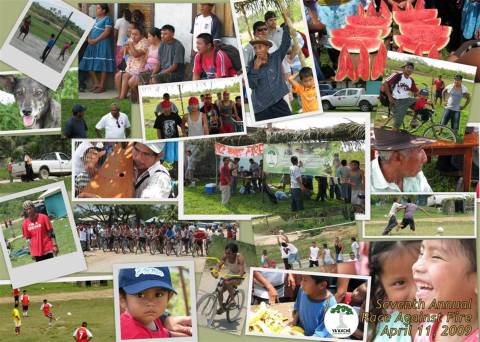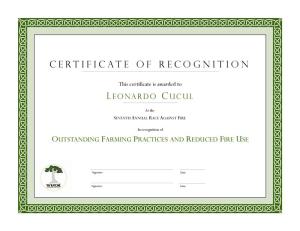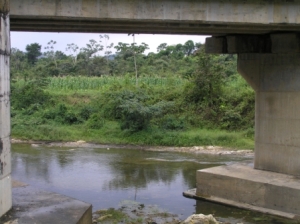Here is a photo collage of some of the images from our 2009 Race Against Fire, an annual presentation and community forum on fire awareness and preparedness. Among the images you can see:
- The race participants at the start and the winner at the end of the race
- A wide cross section of the many hundreds of visitors who attended
- Recipients of our inaugural award recognizing Outstanding Farming Practices and Reduced Fire Use
- Representatives of the Red Cross, Fire Department, and Traffic Department, all of whose organizations supported the event
- Participants in the soccer/football and volleyball tournaments
- Watermelons from one of our three eating contests
- A traditional Mayan harpist who performed at the event
Below you’ll find an example of the award certificate that was presented to those farmers who had significantly reduced and/or eliminated the use of fire in their field preparations. Many had also started organic cacao plots, which along with being highly lucrative, are organic and do not require destroying any natural forest. Along with the certificate, each farmer was awarded a small set of tools useful in cacao harvesting and the recognition of their peers and communities.
We are very thankful to the village of Indian Creek for providing the venue and much of the food for this event. Our congratulations to the race and competition winners and to those farmers recognized for their outstanding practices!





